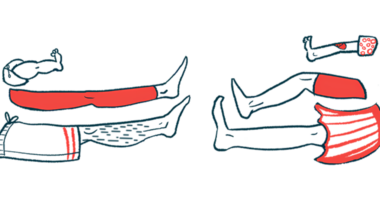Parkinson’s Patients Needing ICU Care More Fragile Than Others: Study

Longer hospital stays and poorer overall health were evident among Parkinson’s patients admitted to intensive care units (ICUs) in Brazil, but their likelihood of dying in an ICU was comparable to those of other patients, an 18-year analysis of hospital records found.
Sepsis and trauma were among the leading causes of ICU admission for people with Parkinson’s, the analysis of records from seven hospitals in the Brazilian city of Curitiba reported.
The analysis, “Evaluation of Patients with Parkinson’s Disease in Intensive Care Units: A Cohort Study,” was published in the journal Parkinson’s Disease.
Parkinson’s prevalence is known to increase with advancing age and is associated with a greater number of co-existing conditions, such as dementia and infections such as pneumonia. Consequently, patients are hospitalized around 1.5 times more frequently and for longer times than those without the disease, studies show.
In parallel with the general population, life expectancy is increasing among Parkinson’s patients, but information on the outcomes of those admitted to hospital ICUs is scarce.
To address this knowledge gap, a study compared the characteristics and outcomes of patients with and without Parkinson’s who were admitted to ICUs across seven hospitals in Curitiba, the capital city of Paraná state, over 18 years. The investigation was led by researchers based at the Center for Studies and Research in Intensive Care Medicine (CEPETI) in Curitiba.
Their aim was to improve care for these patients and develop “strategies to prevent harm and reduce the morbidity associated with the disease,” the study’s researchers wrote.
Medical information was extracted from the CEPETI database, which contained data on Parkinson’s patients consecutively admitted to ICUs. Records of ICU patients without the disease were randomly selected from the same database and paired with Parkinson’s patients based on age, sex, year, and hospital of admission in a 2:1 ratio.
Of the 79,385 ICU admissions identified from 2001 to 2019, 231 records covered patients with Parkinson’s and 462 matched patients without the disease (controls). The mean age of Parkinson’s patients admitted to ICUs was 77.7 years and 116 (50.2%) were men; among controls, the mean age was 77.9 and 232 (50.2%) were men.
The total incidence of ICU admissions among Parkinson’s patients was 0.3%, which occurred with increasing age, the analysis revealed. The highest incidence of admission was among those between the ages of 80 and 89.
Compared with controls, a significantly greater percentage of Parkinson’s patients were admitted to ICUs for neurological conditions (15.2%), trauma (17.3%), elective surgery (17.7%), and sepsis (36.8%), a potentially life-threatening condition that occurs when immune responses to an infection damage tissues. Among controls, elective surgery (28.8%) was the most prominent reason for ICU admission.
“Patients with Parkinson’s disease are not admitted to hospitals due to direct complications of the disease, but rather due to indirect causes” like pneumonia, urinary tract infections, and falls, the scientists wrote.
Parkinson’s patients primarily came to the ICU from the emergency department and medical wards, whereas controls were referred from emergency and surgical wards.
On ICU admission, people with Parkinson’s had a lower level of consciousness relative to controls, as assessed with the Glasgow coma score. Their overall health was worse, as measured by the Acute Physiology and Chronic Health Evaluation (APACHE II) scores in the first 24 hours, which was “probably associated with the natural progression of the disease, resulting from cognitive decline, mood disorders, and frailty in these patients,” the researchers noted.
In contrast, non-Parkinson’s patients required more frequent treatment with vasoactive medications, used in critical situations to increase or decrease blood pressure and/or heart rate.
Within the first day in the ICU, no significant differences were seen between the two groups regarding invasive ventilatory support or the Sequential Organ Failure Assessment (SOFA) score, which determines the extent of a patient’s organ function or rate of failure.
Parkinson’s patients had a more prolonged ICU stay compared with controls, but mortality rates between these groups were the same. Overall, most patients who died had some degree of limitation on the use of advanced life support, the study noted.
Parkinson’s patients discharged from an ICU were also more like to have advanced life support limitations and lower Glasgow scores for consciousness than control group patients. Again, the researchers suggested this was due to the disease’s “natural progression.”
Statistical analysis showed the presence of Parkinson’s was not related to increased risk of mortality. However, the chance of death rose with the use of vasoactive drugs, a lower level of consciousness on ICU admission, and higher APACHE II scores for worse health.
After adjusting for these three factors — consciousness level, vasoactive drug use on admission, and APACHE II scores — there was no association between those with Parkinson’s and death.
“Although patients with Parkinson’s disease were admitted with higher severity scores and remained in the ICU for a longer time, their mortality rate was not higher than that in patients without the disease,” the researchers concluded.







